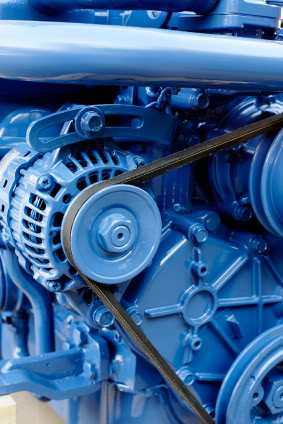ALL4’s: Is That Your Final Answer?
Last Month’s Answer and Winner:
There were two correct answers to our March “Is That Your Final Answer” question; however, Mark Lane provided the correct response before Betsy Macht and identified the acronym for AERMOD as the AERMIC Model, where AERMIC stands for American Meteorological Society and U.S. EPA Regulatory Model Improvement Committee. Congratulations to Mark and thanks to all of the respondents.
Question: 
Our April “Is That Your Final Answer” question concerns ALL4 trivia. In the lobby to our Kimberton office resides a set of plaques that list all of the individuals that have worked at ALL4 and the date that they started. In addition to the current 29 employees listed, there are some favorite past employees such as Sonja Skerbeck, Marvin Gregory, and Corey Brandt. But of all of the people identified, there is only one individual who qualifies as being the first ALL4 employee and only one individual that qualifies as being the most recent ALL4 employee (as of March 31, 2011). This month’s question is to identify these two employees. Here are a couple of little hints: the first ALL4 employee is a Penn State graduate, registered professional engineer, and works with clients in the pulp and paper, cement, and glass manufacturing industries. The most recent employee is noted in this issue of 4 The Record and is responsible for ALL4’s EnviroReview marketing and sales.
Answer:
Please e-mail your answer to final.answer@all4inc.com. Include in the e-mail your name, answer, and address (to receive your prize).
The final answer feature of 4 The Record is designed to test your knowledge across the environmental field, quiz you on the building blocks of air quality rules, stump you on ALL4 general trivia, and challenge you with brain teasers that have perplexed us. The first correct answer e-mailed to us will qualify the respondent for free ALL4 gear and will enter the winner in our end-of-the year “Final Answer Championship.” The subsequent month’s 4 The Record will identify the winner and the correct answer from the previous month’s question. You must be an active subscriber of 4 The Record to win a monthly prize and be eligible for the championship prize. ALL4 employees and family members are not eligible to compete. Hope you enjoy this feature and good luck!
Proposal to Defer Emissions from Bioenergy and Other Biogenic Sources
It will hardly come as news that since January 2, 2011, stationary sources planning to either perform major modifications or build new facilities have been required to consider greenhouse gas (GHG) emissions during the process of obtaining their pre-construction permits. However, a number of sources currently affected by these requirements may be afforded temporary relief, as U.S. EPA has proposed to defer the consideration of carbon dioxide (CO2) emissions from bioenergy and other biogenic sources (i.e., biogenic CO2 emissions) when determining whether a stationary source meets the Prevention of Significant Deterioration (PSD) and Title V applicability thresholds, including those for the application of Best Available Control Technology (BACT). The proposed deferral period is three (3) years. The proposed rule does not impact other Federal programs which require consideration of GHGs, such as the New Source Performance Standards or Mandatory Reporting Rule programs.
The term “biogenic CO2 emissions” is defined in the March 21, 2011 proposed rule as emissions of CO2 from a stationary source directly resulting from the combustion or decomposition of biologically-based materials other than fossil fuels. The proposed deferral applies only to biogenic CO2 emissions and does not affect non-GHG pollutants or other GHGs (e.g., methane (CH4) and nitrous oxide (N2O)) emitted from the combustion of biomass fuel. The proposed deferral clarifies that biogenic CO2 emissions from stationary sources which co-fire fossil fuel and biologically-based fuel, and/or combust mixed fuels (e.g., tire-derived fuels, municipal solid waste (MSW), etc.), are included under the proposed deferral. However, the fossil fuel-derived CO2 emissions are not. U.S. EPA has specifically requested comment on whether this deferral should specify that stationary sources subject to the PSD and Title V programs use a specific method(s) for determining their biogenic portion of CO2 emissions. U.S. EPA is also seeking comment on other ways to ensure that there is an accurate estimate of how much biogenic CO2 is subject to the deferral for a specific facility, particularly when combusting mixed fuels. Comments will be accepted through May 5, 2011.
EPA Provides New Source Review (NSR) “Netting” Guidance
In a recent letter dated April 4, 2011 to the Indiana Department of Environmental Management (IDEM), U.S. EPA clarified its position on conducting “Step 2” of a New Source Review (NSR) permitting applicability analysis (determine the net emissions increase). This clarification is very important for facilities to consider if they have multiple projects that have occurred or will be occurring within a 5-year contemporaneous period. If a project results in a significant emission increase during “Step 1” (determine the significant emission increase), any contemporaneous projects that avoided NSR applicability through the use of the “Actual to Projected Future Actual” applicability test will be reviewed in “Step 2” (evaluation of contemporaneous and creditable emissions increases and decreases) using the unit’s emissions increase as determined by comparing past actual emissions to potential to emit (PTE). Contemporaneous projects cannot use their 
More Changes to Subpart ZZZZ
On March 9, 2011, U.S. EPA published direct final changes to 40 CFR Part 63, Subpart ZZZZ – National Emission Standards for Hazardous Air Pollutants for Reciprocating Internal Combustion Engines (RICE MACT) in the Federal Register. The changes to the rule were needed to correct minor typographical errors and to amend certain regulatory text to clarify compliance requirements related to continuous parameter monitoring systems (CPMS). Unless U.S. EPA received significant negative public comments by April 8, 2011, the changes will be effective without further notice on May 9, 2011.

U.S. EPA Provides SO2 NAAQS “Implementation” Guidance
On March 25, 2011, U.S. EPA released guidance on the implementation process for the 1-hour sulfur dioxide (SO2) National Ambient Air Quality Standard (NAAQS). The 1-hour SO2 NAAQS was promulgated in June 2010. As part of the NAAQS implementation process, states need to make attainment and nonattainment designations (i.e., determinations of which areas are, or are not, in compliance with NAAQS) and submit them to U.S. EPA for approval. Although these designation decisions are typically based on a review of ambient monitoring data, U.S. EPA has recommended that the 1-hour SO2 NAAQS designations should also rely on facility-specific air dispersion modeling. The use of dispersion modeling for the designation process has far reaching impacts on industry (see ALL4’s May 2010 4 The Record article entitled “Not So Fast – Getting That Air Permit Won’t Be As Easy As You Think” and July 2010 4 The Record Extra! entitled “Implementation of the New SO2 NAAQS Through Modeling”). Modeling performed by individual facilities to demonstrate NAAQS compliance could result in the requirement to implement emission reductions or process changes that would need to be implemented by 2017. Several states are already performing air dispersion modeling for individual facilities and the remaining states will follow after U.S. EPA releases additional guidance in the early summer time frame. Any facility that has the potential to emit (PTE) greater than 100 tons per year of SO2 is likely to be required to perform modeling. ALL4 recommends that facilities plan ahead for the potential impacts of 1-hour SO2 air dispersion modeling. Stay tuned to 4 The Record for continued updates on the 1-hour SO2 NAAQS implementation process.


